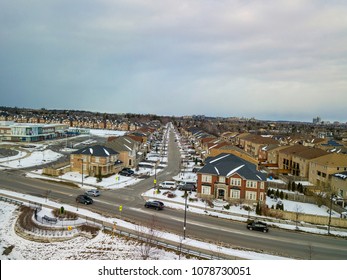Population Characteristics
According to the latest census, Richmond Hill has a population of around 202,022 people. The town's population is in increased . Between 2016 and 2021, the population of Newfoundland and Labrador has increased by 3.59%.
| Population in 2016 | Population in 2021 | Difference |
|---|---|---|
| 195,022 | 202,022 | +3.59% |
Population By Genders
The male population of Richmond Hill is around 98,065 while the female population is around 103,955.
Of the 202,022 total population in Richmond Hill, the largest gender is female with around 103,955 women within the population.
| Male | Female | Difference |
|---|---|---|
| 98,065 | 103,955 | +5.67% |
Population by Age Characteristics
Richmond Hill has an aging population. The majority of the population is people aged 50 to 54 years old, accounting for 8.60% of the total population. The town median age is 43.60.
| Data | Male | Female | Difference | Total |
|---|---|---|---|---|
| 50 to 54 years | 8,155 8.30% | 9,185 8.80% | 11.21% | 17,335 8.60% |
| 45 to 49 years | 7,275 7.40% | 8,780 8.40% | 17.14% | 16,060 7.90% |
| 55 to 59 years | 7,955 8.10% | 8,080 7.80% | 1.55% | 16,040 7.90% |
| 15 to 19 years | 7,230 7.40% | 6,495 6.20% | 10.17% | 13,730 6.80% |
| 60 to 64 years | 6,545 6.70% | 7,095 6.80% | 7.75% | 13,640 6.80% |
| 40 to 44 years | 5,690 5.80% | 7,385 7.10% | 22.95% | 13,075 6.50% |
| 20 to 24 years | 6,720 6.90% | 5,810 5.60% | 13.54% | 12,525 6.20% |
| 10 to 14 years | 6,330 6.50% | 6,095 5.90% | 3.71% | 12,430 6.20% |
| 35 to 39 years | 5,585 5.70% | 6,295 6.10% | 11.28% | 11,880 5.90% |
| 25 to 29 years | 6,025 6.10% | 5,595 5.40% | 7.14% | 11,625 5.80% |
| 30 to 34 years | 5,745 5.90% | 5,735 5.50% | 0.17% | 11,480 5.70% |
| 65 to 69 years | 5,120 5.20% | 5,715 5.50% | 10.41% | 10,840 5.40% |
| 5 to 9 years | 5,090 5.20% | 4,900 4.70% | 3.73% | 9,990 4.90% |
| 70 to 74 years | 4,365 4.50% | 4,975 4.80% | 12.26% | 9,340 4.60% |
| 0 to 4 years | 3,860 3.90% | 3,695 3.60% | 4.27% | 7,555 3.70% |
| 75 to 79 years | 2,680 2.70% | 3,220 3.10% | 16.77% | 5,900 2.90% |
| 80 to 84 years | 1,990 2.00% | 2,410 2.30% | 17.43% | 4,405 2.20% |
| 85 years and over | 1,695 1.70% | 2,485 2.40% | 31.79% | 4,180 2.10% |
| 85 to 89 years | 1,160 1.20% | 1,485 1.40% | 21.89% | 2,645 1.30% |
| 90 to 94 years | 455 0.50% | 725 0.70% | 37.24% | 1,185 0.60% |
| 95 to 99 years | 65 0.10% | 230 0.20% | 71.74% | 300 0.10% |
Broader Age Groups
If the town's population is divided into broader age groups, most of the population falls into the 15 to 64 years age group. The group accounts for 68.00% of the population. The other age groups, 65 years and over and 0 to 14 years, account for 17.20% and 14.80%, respectively.
If we look at the population data from the broader age groups, we can see that most people in Richmond Hill are within the 15 to 64 years age group.
| Data | Male | Female | Total |
|---|---|---|---|
| Median age of the population | 42.00% | 44.80% | 43.60% |
| Average age of the population | 41.10% | 43.10% | 42.20% |
| 65 years and over | 16.20% | 18.10% | 17.20% |
| 0 to 14 years | 15.60% | 14.10% | 14.80% |
Explore Richmond Hill Through Videos
Population of Richmond Hill by Ethnicity and Origin
The population of Richmond Hill is quite diverse, which contributes to the town's vibrant cultural landscape. Richmond Hill is inclusive and accepts various ethnic groups with open arms. Furthermore, the province appreciates the unique contributions that each ethnicity brings.
The top 5 ethnicities and origins in the province are Chinese, which accounts for 28.52% of the total population, followed by Iranian (10.13%), Italian (8.03%), Canadian (4.48%), and Indian (India) (4.42%).
Other ethnicities and origins in Newfoundland and Labrador include Russian, English, Persian, Irish, and Korean.
| Ethnicity and Origin | Male | Female | Percentage in Population |
|---|---|---|---|
| Chinese | 28.14% | 28.88% | 28.52% |
| Iranian | 10.30% | 9.96% | 10.13% |
| Italian | 8.46% | 7.61% | 8.03% |
| Canadian | 4.65% | 4.32% | 4.48% |
| Indian (India) | 4.39% | 4.45% | 4.42% |
| Russian | 4.04% | 4.21% | 4.13% |
| English | 4.29% | 3.80% | 4.04% |
| Persian | 3.86% | 3.51% | 3.68% |
| Irish | 3.31% | 3.24% | 3.27% |
| Korean | 3.08% | 3.15% | 3.12% |
Household and Dwelling Characteristics
About 39,295 of Richmond Hill's population live in a single-detached house. In addition, most of them are living in 2 persons household.
Household Size
About 13.65% of the population lives in 2 persons households. 3 persons households ranked second, accounting for 10.90% of the population. 4 persons, 1 person, and 5 or more persons households account for 10.65%, 8.80%, and 6.00%, respectively.
| Number of Person(s) in Household | Total | Percentage |
|---|---|---|
| 2 persons | 18,935 | 13.65% |
| 3 persons | 15,080 | 10.90% |
| 4 persons | 14,770 | 10.65% |
| 1 person | 12,180 | 8.80% |
| 5 or more persons | 8,350 | 6.00% |
Income in Richmond Hill
Analyzing income distribution in Richmond Hill can help us better understand its socioeconomic dynamics.
Per Capita Income
According to 2020 data, the median personal income within Richmond Hill is $36,800.
A region's per capita data sheds light on the average income earned per person living in it. Since per capita income is calculated by dividing the region's total income by its population, it quantifies the population's economic situation on an individual basis.
Such data offers insights into the town's economic performance, spread of income across individuals, quality of life, as well as disparities within its borders.
Most of Richmond Hill population or around 123,220 people falls in the $10,000 to $29,999 group. The next largest groups are the $30,000 to $49,999, and $50,000 to $79,999 with around 82,520 and 75,750 people, respectively.
Household Income
The Richmond Hill's median household income is $102,000, according to 2020 data.
The data provides important insights into the town's economic landscape as well as the living standards of its population.
Analyzing such data enables researchers, policymakers, and businesses to gain a more comprehensive understanding of the town's income distribution, disparities, and trends.
Education Levels in Richmond Hill
This data sheds light on the distribution of Richmond Hill residents across educational milestones.
Such information is crucial in shaping the province’s policies on education, workforce development strategies, and initiatives that aim to improve access to quality education and promote lifelong learning opportunities.
72.60% or most of the Richmond Hill population has a Postsecondary certificate, diploma or degree. 50.30% of the population has a Bachelor's degree or higher, 19.80% has a High (secondary) school diploma or equivalency certificate, and 7.60% has No certificate, diploma or degree.
| Degree | Men | Women | Total | Percentage |
|---|---|---|---|---|
| Postsecondary certificate, diploma or degree | 95,870 | 104,810 | 200,685 | 72.60% |
| Bachelor's degree or higher | 67,070 | 71,505 | 138,570 | 50.30% |
| High (secondary) school diploma or equivalency certificate | 28,110 | 29,610 | 57,715 | 19.80% |
| No certificate, diploma or degree | 11,335 | 12,165 | 23,505 | 7.60% |
Employment in Richmond Hill
This dataset provides a snapshot of employment trends in Richmond Hill. It encompasses a wide range of sectors, industries, as well as job categories.
The data shows that the unemployment rate in Newfoundland and Labrador is at 8.19% which is very high.
| Status | Percentage |
|---|---|
| Employment rate | 54.40% |
| Unemployment rate | 8.19% |
Working as an Employee
The table shows the data on the total number of individuals in the town who work as an employee. The majority of Richmond Hill's population (around 61.50%) are working permanent position as an employee.
Self-employed
In the town, there are 14,770 men and 8,680 women working as self-employed individuals, bringing the total number to 23,455.
| Status | Men | Women | Total |
|---|---|---|---|
| Self-employed | 14,770 | 8,680 | 23,455 |
Employment Industry Sectors
The Richmond Hill industry employment sector census data offers insights into the region's economic landscape. The distribution of employment in Richmond Hill is categorized and quantified, which reveals the region's economic composition.
Richmond Hill has a wide range of industries. Most of its population (15%) works in the professional, scientific and technical services sector. The Retail trade sector comes second at 11%, followed by Health care and social assistance at 10%.
| Industry | Men | Women | Percentage |
|---|---|---|---|
| Professional, scientific and technical services | 9,085 | 6,400 | 15% |
| Retail trade | 5,805 | 5,930 | 11% |
| Health care and social assistance | 2,615 | 8,035 | 10% |
| Finance and insurance | 4,810 | 4,935 | 9% |
| Manufacturing | 4,700 | 2,660 | 7% |
| Educational services | 2,085 | 5,060 | 7% |
| Construction | 5,565 | 1,215 | 6% |
| Accommodation and food services | 2,325 | 2,400 | 4% |
| Wholesale trade | 2,795 | 1,830 | 4% |
| Real estate and rental and leasing | 2,110 | 2,195 | 4% |
| Transportation and warehousing | 3,195 | 995 | 4% |
| Other services (except public administration) | 1,600 | 2,100 | 4% |
| Public administration | 1,735 | 1,905 | 3% |
| Administrative and support, waste management and remediation services | 1,845 | 1,435 | 3% |
| Information and cultural industries | 1,765 | 1,085 | 3% |
| Arts, entertainment and recreation | 715 | 750 | 1% |
| Utilities | 375 | 185 | 1% |
| Management of companies and enterprises | 290 | 245 | 1% |
| Agriculture, forestry, fishing and hunting | 95 | 60 | 0% |
| Mining, quarrying, and oil and gas extraction | 95 | 45 | 0% |
Places of Work
The data offers insights into the commuting patterns as well as workplace distribution in the town. It provides a snapshot of workplaces, showing their geographic distribution and the flow of workers across different areas.
| Work Location | Men | Women | Total | Percentage |
|---|---|---|---|---|
| Usual place of work | 22,740 | 22,735 | 45,475 | 48.90% |
| Worked at home | 18,415 | 18,645 | 37,055 | 39.80% |
| No fixed workplace address | 7,255 | 2,550 | 9,815 | 10.60% |
| Worked outside Canada | 440 | 235 | 675 | 0.70% |
Commuting
The data sheds light on how Richmond Hill residents travel to school or work. It highlights the frequency of different modes of transportation like walking, cycling, carpooling, and public transit.
The data is pivotal in the making of transportation policies as well as the development of transit systems. Ultimately commuting data contributes to improving the quality of life of Richmond Hill residents and sustainable urban planning.
Commuting Duration
This data reveals the average time that the residents of Richmond Hill spend traveling to their workplaces. It also sheds light on the efficiency of the town's public transit systems, and road networks, as well as the accessibility of the town.
| Duration | Percentage |
|---|---|
| 15 to 29 minutes | 32.30% |
| 30 to 44 minutes | 29.00% |
| Less than 15 minutes | 16.50% |
| 60 minutes and over | 11.30% |
| 45 to 59 minutes | 10.80% |
Marital Status
The statistics on marital status in Richmond Hillshed light on its societal dynamics. It captures the diverse types of marital statuses of the population.
Long-term commitments, such as common-law partnerships, civil unions, and marriages, reflect the town's social fabric. We can gain insights into Richmond Hill's changing preferences and norms by examining the trends in marital status.
Language Spoken
The data below highlights town's linguistic diversity, showing elegances of solo language as well as bilingual harmonies. Other than language, it also shows the cultural landscape in Canada.
English is the most spoken official language in Richmond Hill. About 184,650 people living in the province speak English, 12,660 people speak Neither English nor French, 2,450 people speak English and French language, and 1,280 people speak French language.
| Language | Population |
|---|---|
| English | 184,650 |
| Neither English nor French | 12,660 |
| English and French | 2,450 |
| French | 1,280 |
Religion
Richmond Hill is predominantly Christian. About 79,490 of its population is Christian (37,000 males and 37,000 females).
The second largest religion in the province is Muslim with 13.0% of the population adhering to the religion. There are also Jewish and Hindu, both represent 4.3% and 2.5% of the population, while Buddhist represent 2.2% of the population.
| Religion | Population |
|---|---|
| Christian | 39.6% |
| Islam | 13.0% |
| Jewish | 4.3% |
| Hindu | 2.5% |
| Buddhist | 2.2% |
| Sikh | 0.3% |





